
What is a bird? Textbook definitions would say ‘warm-blooded vertebrates that have feathers, toothless, beaked jaws and lay hard-shelled eggs’. But there is much more to them — their lives have enough drama, adventure, danger and romance to put a movie script to shame. And when you start looking at them closely, you realise there is a lot for you as a human to relate to.
One of the simplest joys of watching birds stems from the fact that they’re as unique and distinct as us. Let me start with food fads. Some birds such as the Oriental Honey Buzzard, well-adapted to prey on bee larvae, have a sweet tooth. Others such as the Hoopoe love some leisurely ‘me-time’, with sun-bathing an indispensable part of their routine. And many such as the Bar-headed Geese and Brahminy Shelducks — some of the highest flyers in the world, who can soar over Himalayan peaks — adhere strictly to a high-fibre diet of grass, putting your go-to fitness influencer to shame.
Daredevils assemble
Speaking of fitness, birds such as the Shaheen Falcon, the fastest bird in a dive, are born athletes. When it spots a target (often a luckless pigeon), it takes position and transforms into a missile, launching into its famed 390-kmph dive. Such is the impact of the dive that a mere touch of the talon is enough to take the life of the prey.
Birds are just as varied when it comes to perceptions of risk. The familiar Black Drongo is a daredevil that loves playing with fire — quite literally — using bushfires to its advantage by preying on insects that are disturbed by it. Ibisbills, however, prefer to play safe, pretending to be rocks along river rapids.
Black Drongo
| Photo Credit:
Illustration: Rohan Chakravarty
Are you a hornbill or a rock pigeon?
Bird parenting styles could fill a book (and their love lives are made for the movies, but more on that later). Hornbills make for overly devoted parents, with the mother sequestering herself in a tree hole when nesting, and the male working overtime to feed his mate and the growing chicks. Cuckoos, on the other hand, would make for embarrassing guests to have on a parenting podcast. Pied Cuckoos are considered harbingers of rain in India. The monsoon is also the time when the Jungle Babbler, the preferred host for this brood parasite, breeds. The cuckoo lays her egg in the babbler’s cup-shaped nest, and bids goodbye to any parental worries.
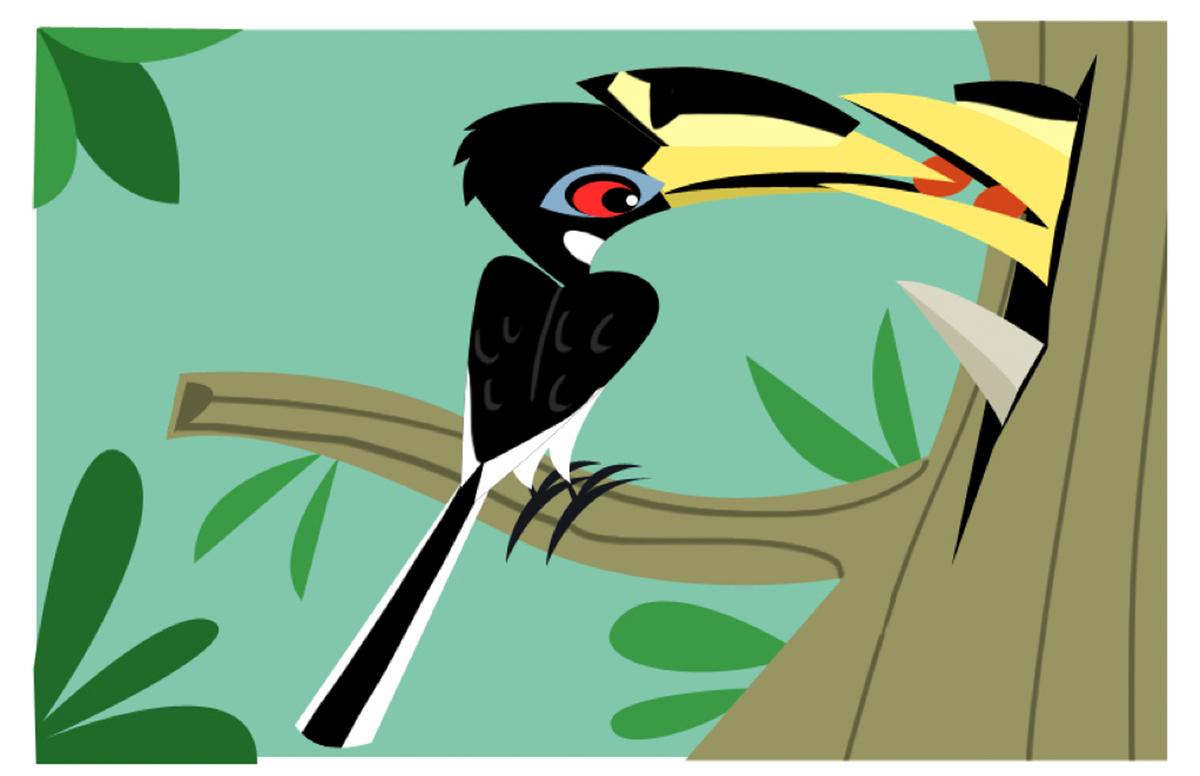
Hornbill parent
| Photo Credit:
Illustration: Rohan Chakravarty
Rock Pigeons bring the same lazy carelessness to their nests — shabby clusters of twigs put together half-heartedly — which look unworthy of even being called nests. Tailorbirds, in contrast, are skilled embroiderers meticulously stitching leaves together to build their famed nests.
Nature’s Romeos and Don Juans
Speaking of feathered love, Sarus Cranes, the avian embodiment of cheesy romance and unwavering marital fidelity, are known to mate for life. Snipes and Phalaropes lead more bohemian lives, where females take multiple mates and leave the clutch in the males’ care, hopping over to her next Bumble date.
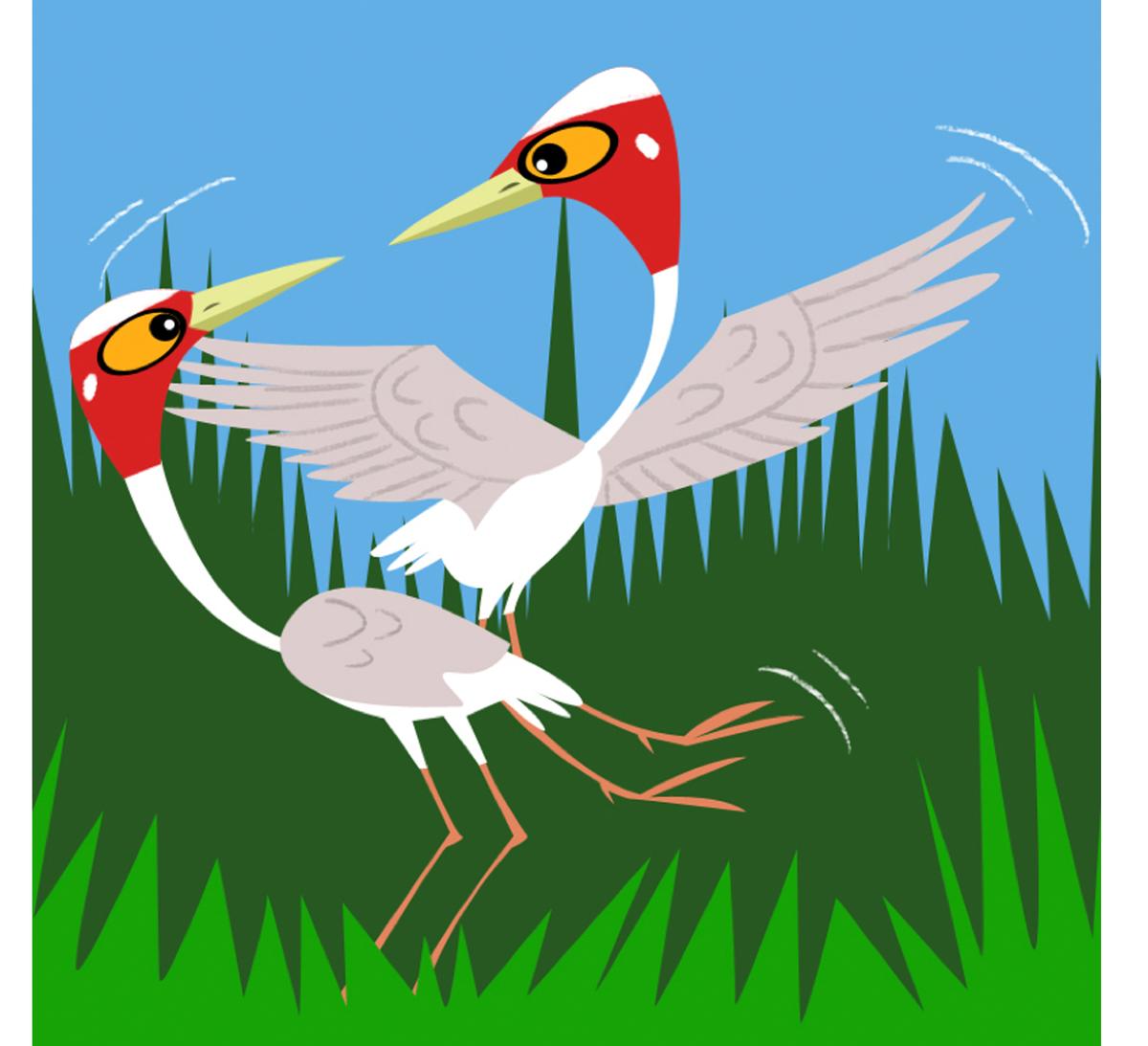
Sarus courtship
| Photo Credit:
Illustration: Rohan Chakravarty
Pheasants like Monals and Tragopans come dressed in exquisite regalia and put on elaborate courtship displays of gleaming ornaments to woo females. But Nightjars sport drab plumages and blend perfectly with their surroundings to evade attention, just like me at family weddings.
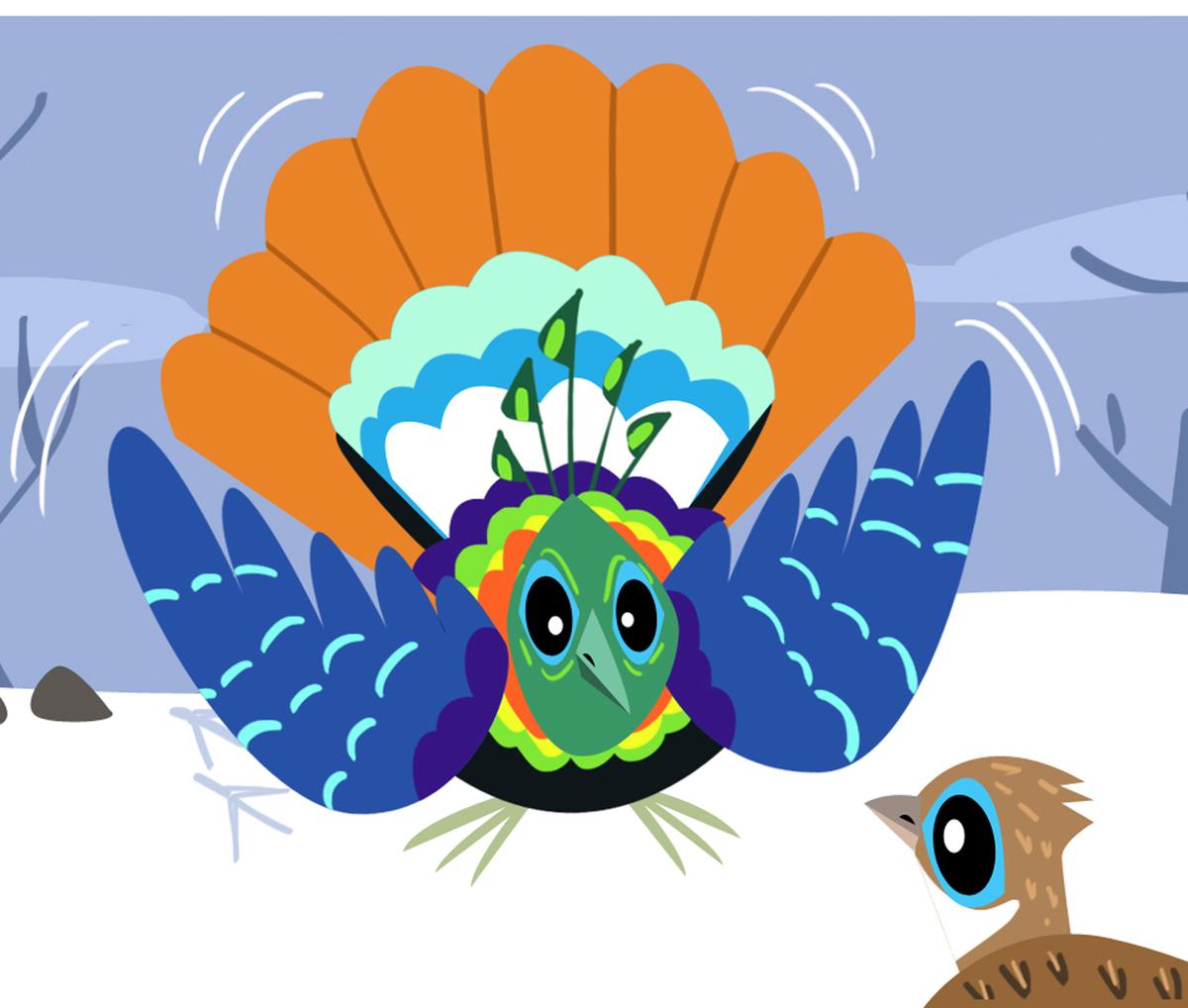
Himalayan Monal
| Photo Credit:
Illustration: Rohan Chakravarty
Left or right, pick your side
Not all birds fly undercover though. Malabar Whistling Thrushes are musical prodigies, and are not shy of flaunting their skill. You know you are in the Western Ghats when the melodious whistle of the thrush reverberates through the hills. Such is its human quality that it led ornithologist Salim Ali to nickname the bird ‘whistling schoolboy’.
Art, in the avian world, goes beyond music. Artisans among birds, such as the Baya Weaver, can put even the most diligent traditional media artists to shame, making over 500 trips to complete making their pendulous nests. Others, including remorseless thieves such as the Skuas. who happily steal a tern’s hard-earned lunch, evoke the image of wannabe artists on social media using generative AI to make ‘art’.
Other pursuits smack of left brain savants. Bearded Vultures are maths and physics wiz kids — their manoeuvre of carrying bones from a carcass and dropping them from the right height and angulation over rocks to crack them open and feast on the marrow, takes up to seven years to master.
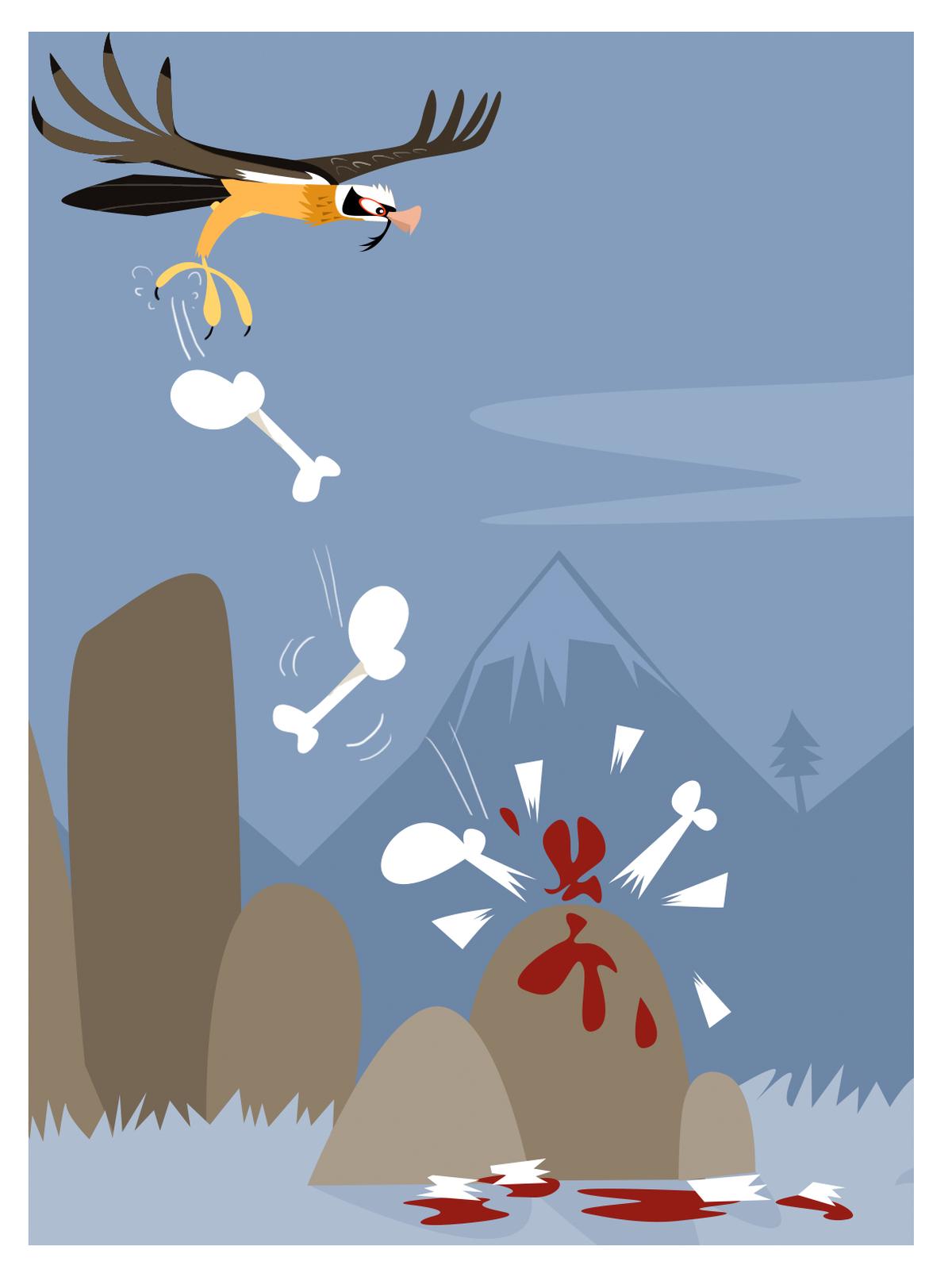
Bearded Vulture
| Photo Credit:
Illustration: Rohan Chakravarty
Bird watching, a silent rebellion
Do birds have hobbies and passions? Some live the gourmet life, and use precision cutlery for the diet of their choice. Case in point: the Asian Openbill’s carefully designed bill gap, suited exclusively for sliding the bodies of snails off their shells. Other close cousins of the same stork, the Adjutants, will eat absolutely anything that they can catch, and even scavenge readily. If you have a penchant for killing houseplants with unintended neglect, flowerpeckers, India’s smallest birds, are who you need to turn to for advice. These nano-sized gardeners plant mistletoes all around our forests, and have devised novel and clever ways to do so. As the bird pecks at the mistletoe flower for nectar, the petals pop open scattering pollen all over the bird’s face, which it dutifully deposits on the next flower it visits.It also eats ripe miseltoe fruit, and when ingested, these pass through the gut rapidly, prompting the bird to wipe its rear end awkwardly against the bark to detach the seed enclosed in sticky sap. Both these events happen to be part of nature’s grand horticultural plan – planting the mistletoe seed directly on the host tree.
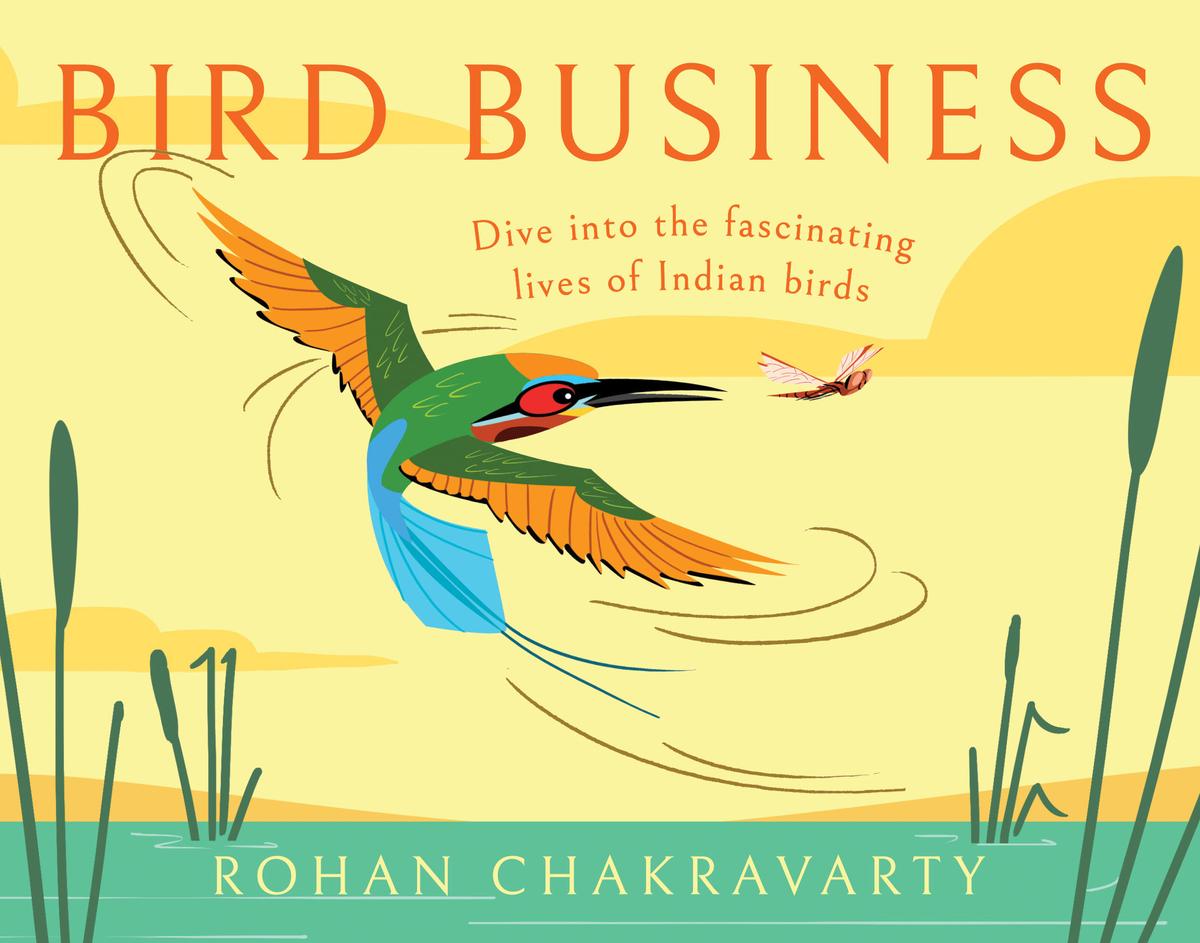
Rohan Chakravarty’s new book, Bird Business
Social behaviours are just as varied. Racket-tailed Drongos that mimic other birds and initiate the formation of mixed species feeding flocks, love a good party. Pittas prefer solitude. While some like the Indian Scimitar Babblers can chat incessantly, others like the Yellow-crowned Woodpecker are great listeners, and can often be seen placing their ears against trees to listen for ants inside the bark, before they start hammering it. Birds such as the leaf warblers seem to have a hyperactivity problem, constantly and restlessly flitting about from leaf to leaf, often to the annoyance of a birdwatcher trying to get a good look, because they’re also a nightmare to identify correctly! Herons have probably taught samurais the virtues of patience — they can standstill for hours before striking potential prey.
Birds come with an astonishing variety of features and traits spread across families and genera, making even the most closely related species distinctly unique from one another, thanks to minor evolutionary tweaks. The Brahminy and the Black Kites are close cousins on the evolutionary tree. But a simple tweak in design — the fork in its tail — has made the latter a master of exploiting scavenging opportunities even in densely populated urban settings, while the Brahminy Kite lags. That’s thanks to the sheer range of stunts and manoeuvres this feature supports.
In an age where gadgets command our constant attention, and when our attention spans, and how we are entertained and informed, are commanded by technocratic corporations, the act of sitting by a lake and observing a reed bird for as long as you wish, feels like a silent rebellion to me. It is this rebellion that I invite you all to participate in with me.
The writer, cartoonist and naturalist’s new book, Bird Business (Juggernaut Books), is out on May 10.
Published – May 09, 2025 02:57 PM is








